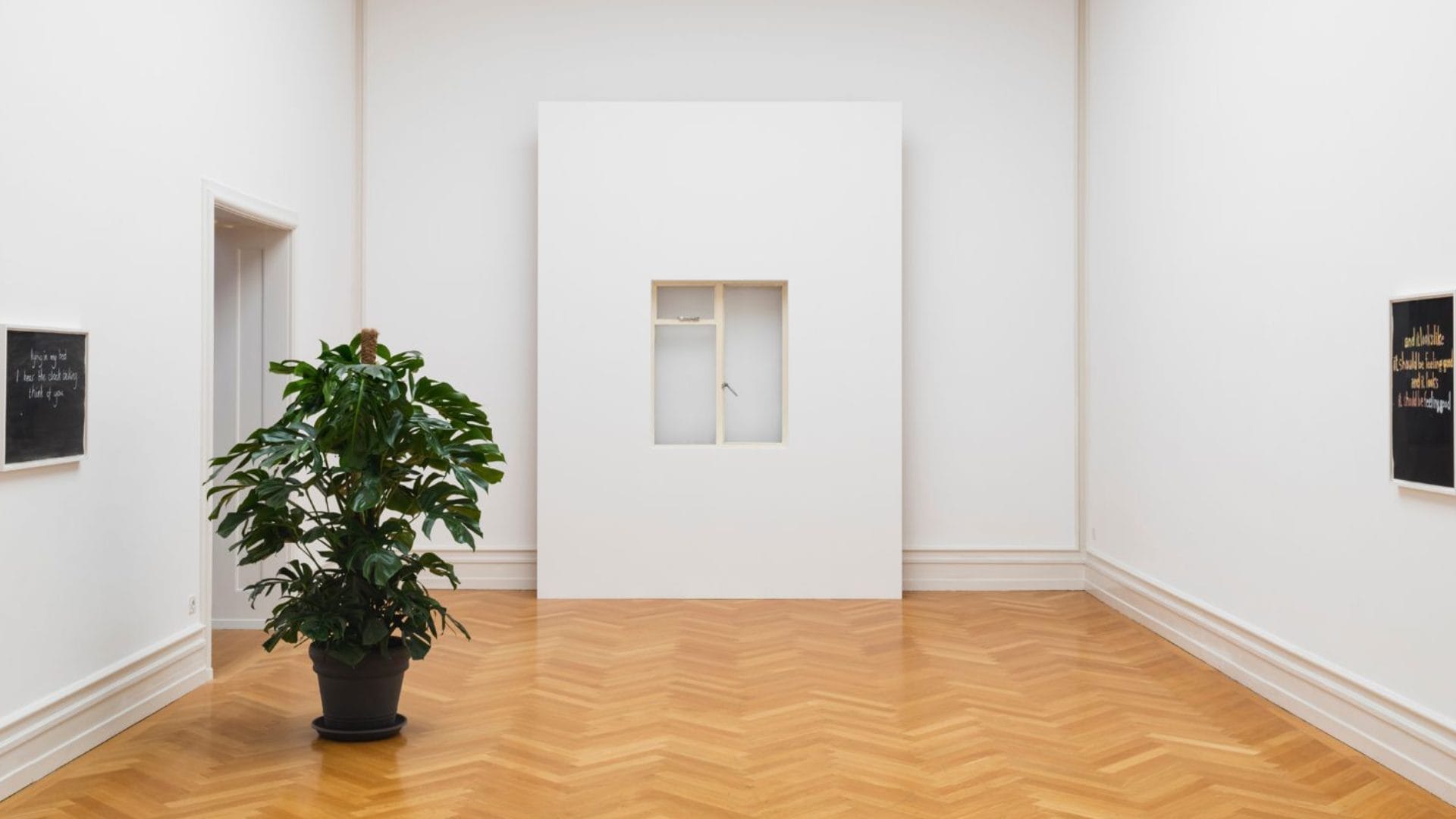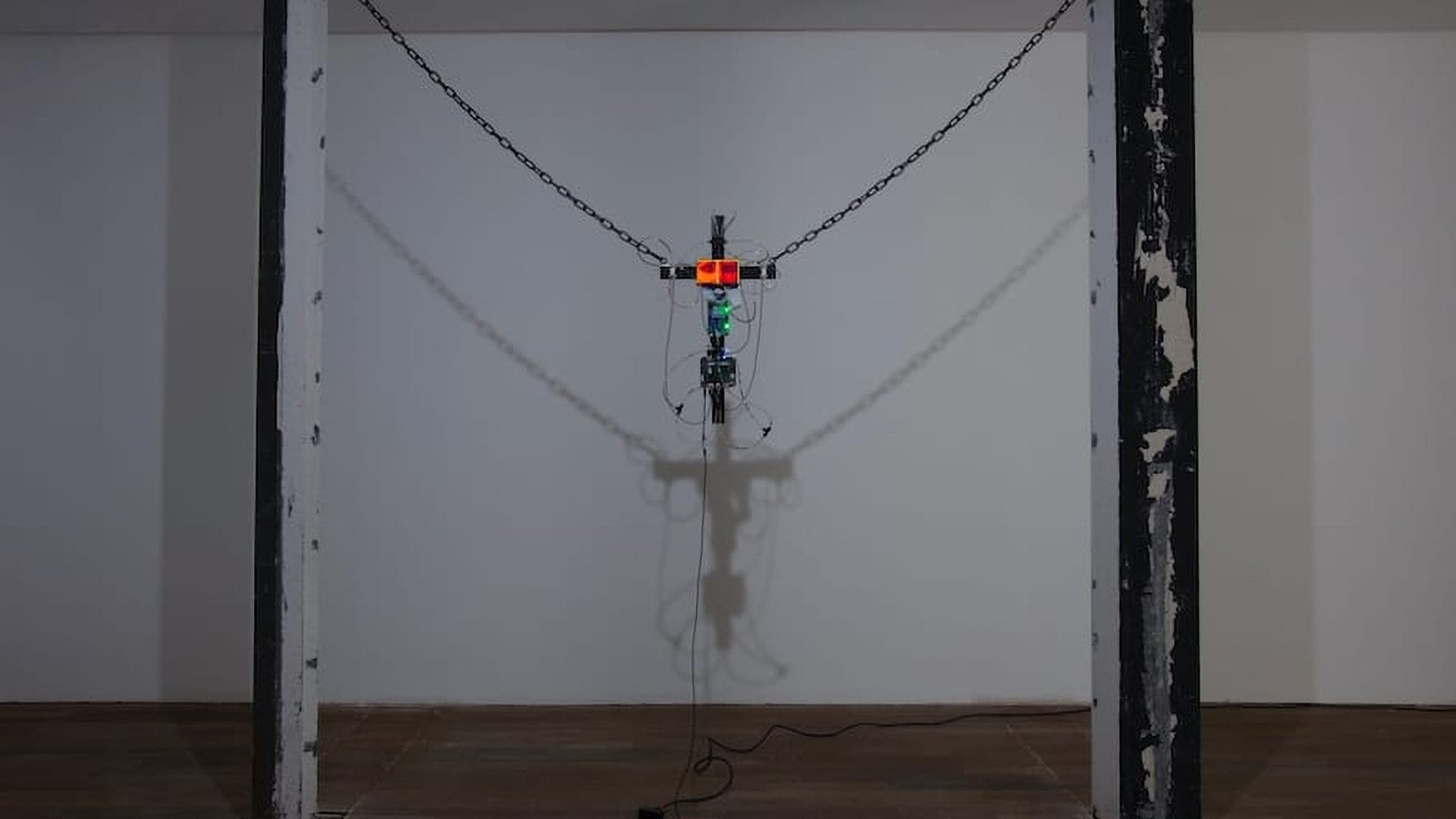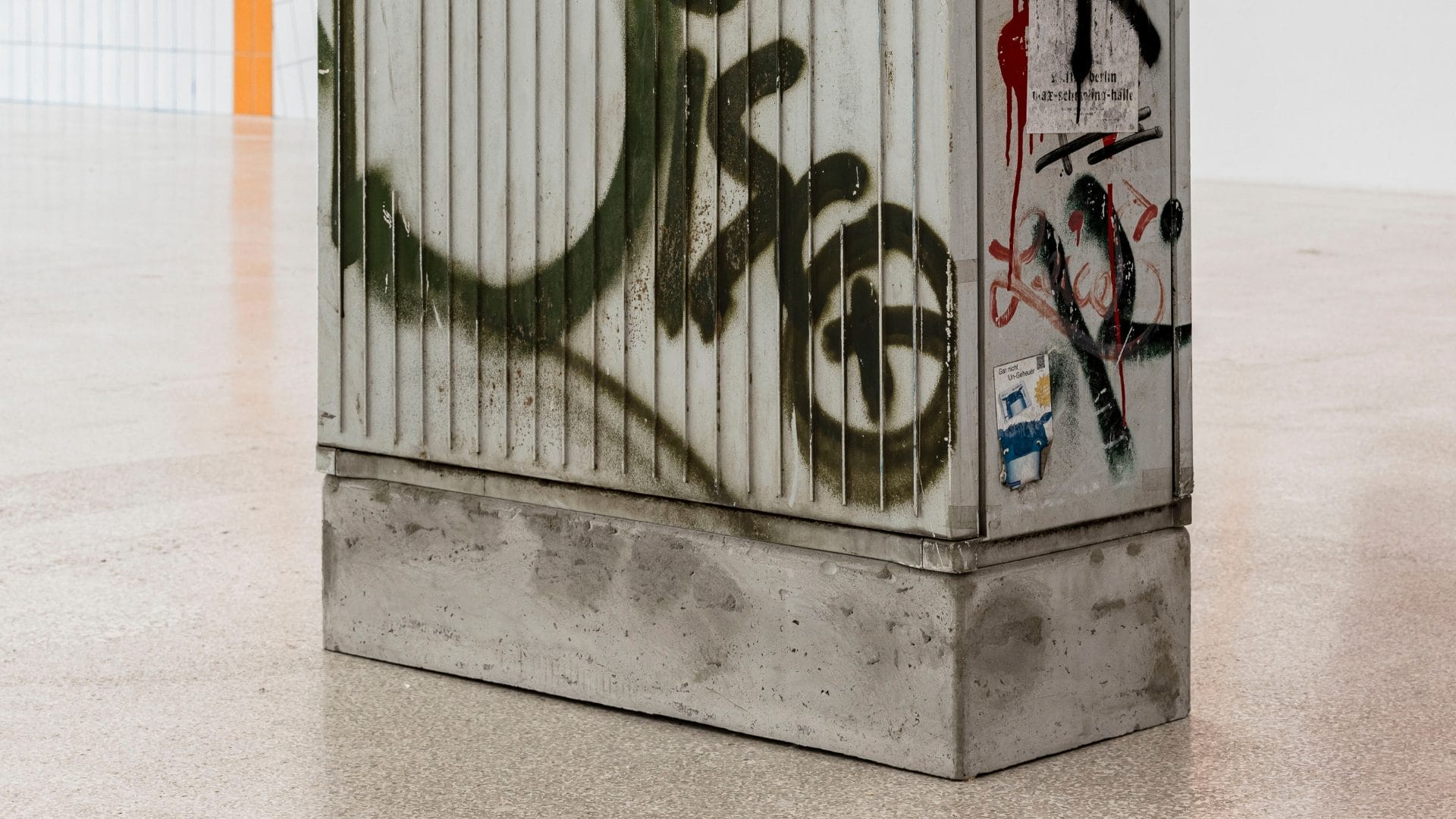
Graffiti. From the Spray Paintings & Underground to the Museion
Discussing graffiti in a museum context can be uncomfortable and unsettling. This is due to the delicate — but also controversial — history, as well as the diversity of intentions and localized nature of its practices. For some, graffiti was obviously an art form that could be expressed in studios and galleries, such as Keith Haring, but also the collective UGA, exhibited for the first time in 1973 at the Razor Gallery in Soho, or LEE Quiñones and Fab Five Freddy represented by Claudio Bruni’s Medusa Gallery in Rome, or Zephyr and Futura2000 supported by businessman and collector Samuel Esses [1] — while for others, it was just about the tag and writings, considering themselves as “graffiti bombers”, not even artists, as stated by the writer Cap in the movie Style Wars (1982) [2].Graffiti was, and is, primarily a subculture and counterculture attitude, a soft and non-violent form of resistance. They could just be marks on territory or wagons like, among the many, Julio204, Taki183, Phase II, Skeme and Super Kool 223 in New York, but also races for fame like the writer Taki183 (interviewed by The New York Times in 1971 ) [3] or Seen. To sum up, graffiti could be a dedicated form of expression, an exploration of lettering and shapes, that again could be or not be art, but is definitely a strong manifestation.

Emerging from this delicate fracture, the curators Leonie Radine and Ned Vena (an artist born in Boston, in 1982, now based in NY) exhibit for the first time in an Italian museum a wider research about spray cans and paint. They try to rewrite the history of its uses by following the two main trajectories of this industrial introduction divided between urban landscapes — i.e., graffiti — and contemporary art. As in every dichotomy, glances and interactions constantly intertwine, and it is precisely through these exchanges that the ultimate goal is achieved: to highlight the possible union that emerges within contemporary artistic contexts. Even if the exhibition is titled Graffiti and some historical writers are reunited here, the focus of the show is how graffiti and art look at each other, giving birth to new fluid expression and trends. In this sense, the exhibition is not intended as a historical reconstruction, nor even as a history reconstruction of spray painting — otherwise many names would be missing from the roll call, from Gino De Dominicis to Anne Imhof — but rather as a portal of arbitrary union between the two worlds according to the Ned Vena’s “into being an artist [4].

The exhibition features in fact, four main sections. Two historical fragments are studied in the heart of the 3rd floor, “Spray Painting” and “Painting Graffiti”, while the contemporary results are spliced between the corridors around the 3rd floor, “Contemporaries. Spray Paintings + Painting Graffiti”, and the entire 4th floor with “Making Cities”. The tour starts with a dialogue between one of the first documented “spray painting” by the Romanian post dadaist-constructivist artist Hedda Sterne, from 1955, and Lawrence Wiener “TWO MINUTES OF SPRAY PAINT DIRECTLY UPON THE FLOOR FROM A STANDARD AEROSOL SPRAY CAN”, from 1968, highlighting the use of the spray in different tendencies or movement. It continues in fact with a selection of extraordinary artworks from “Abstract Expressionism” by David Smith, or from “Minimal Art” perspective, with Charlotte Posenenske, to political tendencies like Melvin Edwards or Carol Rama, and “Post-Painterly” canvas by Dan Christensen, passing through a wonderful piece by the French artist Martin Barré, whose gestures could be really compared to the graffiti writers of that period but also to different artists of today, that we’ll see in the second section.
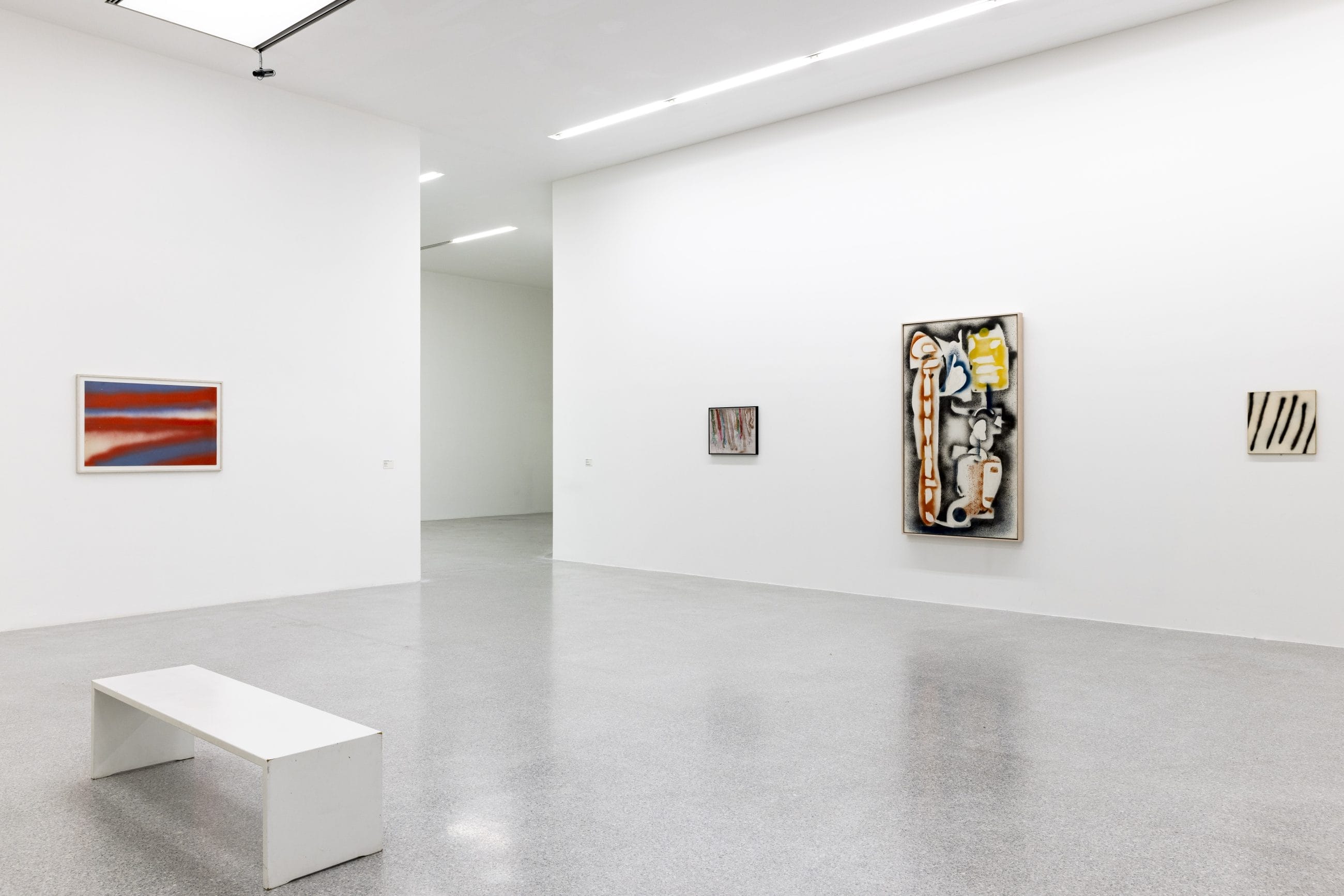
After this brief gaze into the “Spray Painting”, it follows an incursion into the first relationship between graffiti writings and contemporary art scene and spaces called “Painting Graffiti”. In a first room, we are surrounded by the presence of legendary tags, like Blade, Daze, Dondi White, Futura2000, Quik, LEE Quiñones, Rammelzee, Seen and Zephyr. Unusually, these tags aren’t on walls or wagons — like they were used to do at the beginning — but on canvases: the first real link between the writings and accepted art world supports. All selected paintings come from the 1980s, produced in the middle of the art market boom. Certainly, they can’t be compared with tags and paintings on the street, however, they can still provide a slight re-enactment of the New York experience. These canvases — loaned by Central Museum Utrecht — are among the few remaining sources from that period, when graffiti were systematically erased. This was due to the expansive “buffing solutions” — the use of chemical solutions to remove graffiti —promoted by the MTA (Metropolitan Transit Authority), which, after years of failed efforts (including the infamous “final solution”, which cost $6,3 million and caused serious health damage due to toxic solvents) finally succeeded in its war against graffiti in 1984 [5].

Closing the “Painting Graffiti” section and New York vibe, there’s a hall of fame of artists that worked mixing graffiti and arts. A huge piece by Keith Haring (400 x 736 cm), stands in front speaking for itself. On its left side there’s a Jenny Holzer canvas in collaboration with Lady Pink, part of a series that the artists started in 1980s regarding riots, wars and rebellion as is also affirmed by its title “You Are Trapped on Earth so You Will Explode” (1983-84). On its right we can see Malicious Mischief (1997-1998) a polyptych by the social realist Martin Wong in collaboration with the writer LA2 (Angel Ortiz). Whilst, a painting by dutch artist René Daniëls, staking his claim in the Graffiti Art scene accompanies the other names.

Taking a step back, we now enter the “Contemporaries. Spray Paintings + Painting Graffiti” section. Here the explosion of the spray gestures is highlighted by the unique presence of Christopher Wool’s King Stick (P451) (2004) that perfectly explains the gestures and erasures of graffiti artists (but on canvas), and Michael Krebber, whose painting is signed by a discharge spray can. These analysis on the spray gesture are replicated by the photography of Patricia L. Boyd, that produces an amazing unique silver gelatin photogram, as well as by George Nettel’s gray prints on canvas, that compares the spray with the pixels, both moving the physical gesture to still images. Following the corridor Heike-Karin Föll celebrates les bombes series by the already mentioned Martin Barré, amplifying his expression studying the semiotic and relationship with a selected text. In front of her, Karin Sander reminds us the possibility of a pure collaboration between contemporary art and graffiti, with a beautiful series of Patina Paintings from 2014, exhibited as empty canvas on the facade of Le Plateau building in Paris, which were marked by local writers.

At the end of the corridor, a collage by the iconic Dash Snow — who died in 2009 — captures his raw, spontaneous take on the underground scene, already known for his provocative work and rebellious lifestyle. Snow was part of the legendary Lower East Side’s writers’ group IRAK, founded by Kunle Martins (aka EARSNOT) in the 1990s, who presents a couple of interventions on found cardboards, two graphite and charcoal portraits of his friends Dan Colen and Armando Nin. Nin is featured in the show with a soot painting titled Nunca en mi Vida (2024), displayed on the left of a small canvas by Zexor, Brooklyn-based artist who passed away in 2019 at the age of 26. IRAK vibes are recalled in the following room by the presence of Nick Atkins and Shaun Crawford, that use the rooted graffiti language of “puppets” to express rebellion against police violence in New York City. On one hand, the figurative element is evoked by Jutta Koether’s painting, in which she copies a writer’s tag, while on the other hand, the urban landscape is central in Jeanette Mundt’s painting as well as in WANTO’s series of small canvases. The latter depicts the streets of Tokyo where he “bombed” as graffiti writer.
“Contemporaries. Spray Paintings + Painting Graffiti” section ends with a brave interaction between graffiti and installations, finally we are approaching the connection of the dualism. The final section starts with SoiL Thornton, they write on the wall with a brown aerosol spray paint a mobile number from Georgia 478-952-6510, titled Labor Cont(r)act (assisted), that suggests an urgent number to call for employment contract, but that from its presentation reminds me the way some numbers are written on public bathrooms walls (obviously in a greater proportion). Following the corridor we are finally engaging a collaboration between a contemporary German street artist N.O.Madski, and the artists duo KAYA. N.O.Madski realized two writings, one on the window and one on the wall, called Nomad Silver Writing I and Nomad Silver Writing II. These tags are then covered by two corresponding installations by KAYA, an impulsive chaos of materials like metal, vinyl rope, oil on mylar, vinyl, grommets, epoxy, plexiglass and urethane, that also cover a wall, integrating the graffiti actions into contemporary art sculptures and installations, as well as N.O.Madski with a series of sculptures made by rapeseed wax.
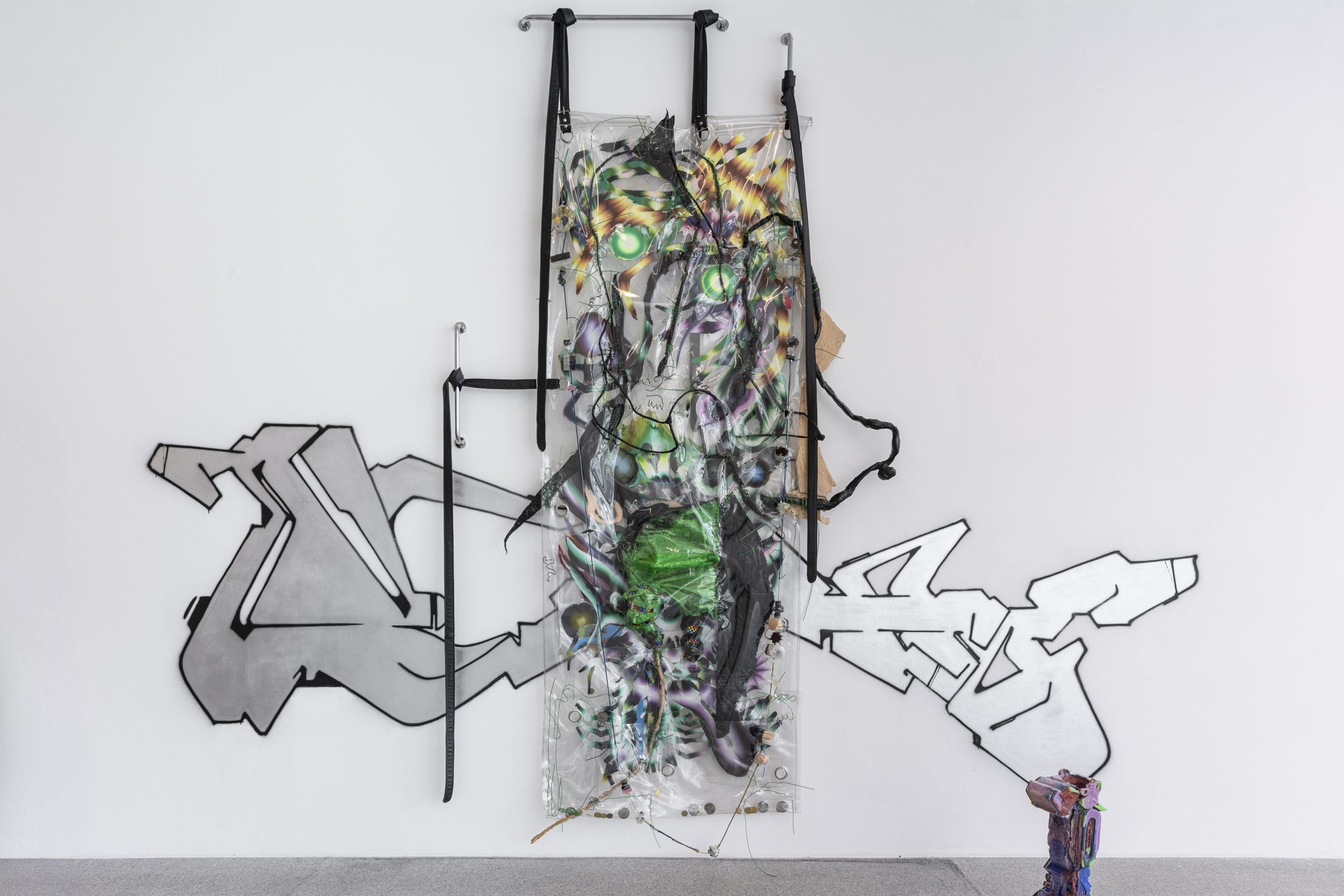
Following the examples of the last side of the third floor, “Making Cities” section seeks the coveted union between graffiti and contemporary art, merging them following the path of the urban landscape. The references are many: from News From Home (1976) by Chantal Akerman — screened two days before the opening at the Museion — to the background of New York’s Graffiti Art scene shown in Charles Atlas’ Ms Peanut Visits New York (1992-1999) exhibited in a dedicated room. They also include Colette Lumiere’s postcards and video, ephemeral collages from Manuel DeLanda’s panorama of 1970s New York street life, and Clayton Patterson’s street photography, curated by Ben Solomon — all contributing to a specific context rooted in to the New York of the 1990s and 2000s. The contextualization continues in the work of Josephine Pryde, who creates a small-scale model train covered by miniature tags by unknown Berlin writers, which is an invitation to visitors to ride it, not simulating the experience of a “bombed” train — that “can’t be recreated” according to the writer Phase II [6] — but to create new connections with the vision of the city.
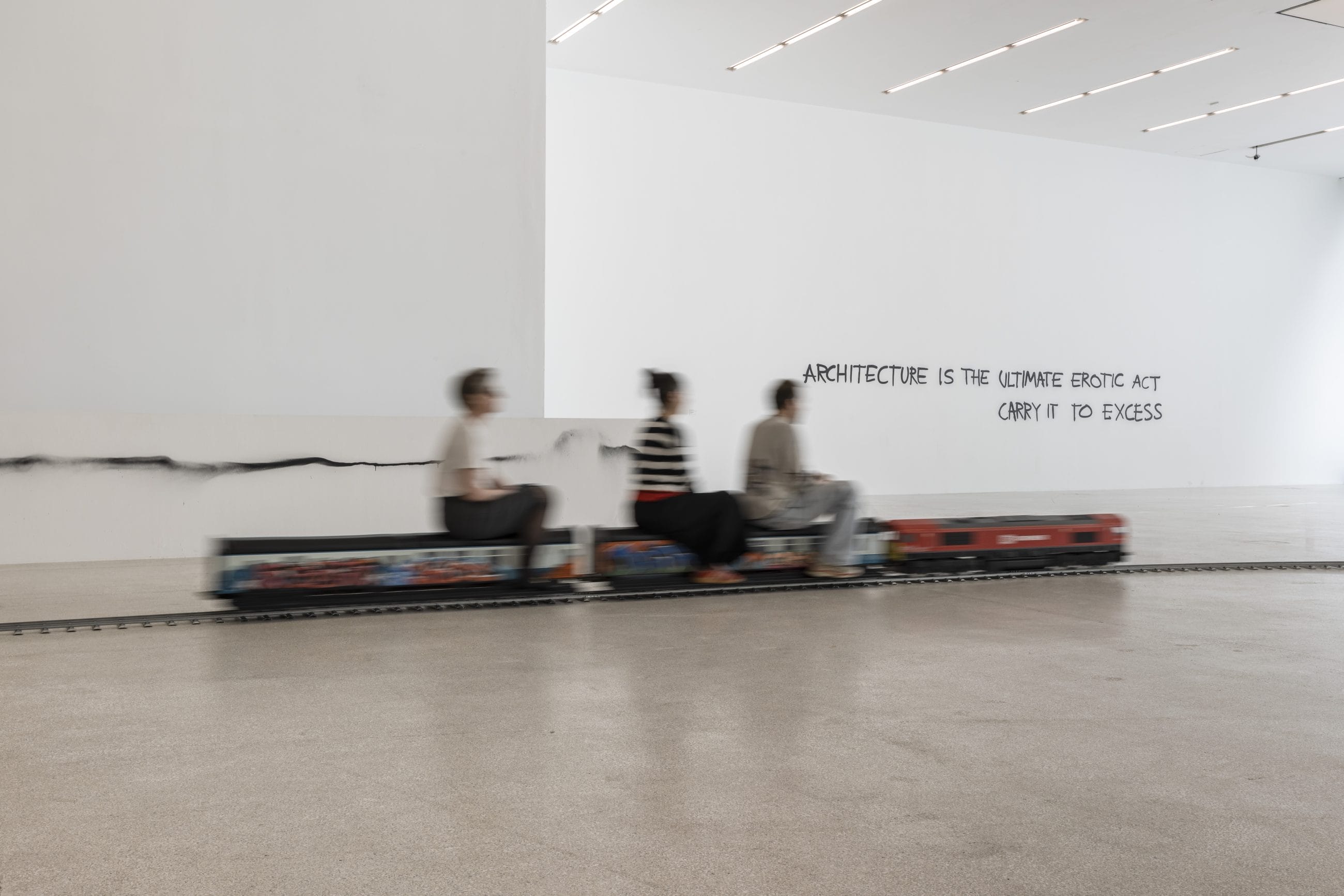
“Architecture is the ultimate erotic act — carry it to excess” suggests Monica Bonvicini. Following her lead, artists begin a poetic encounter with everything around that concept. Matias Faldbakken recreates the pattern of Oslo’s subway walls, replicating its tiles, removed Graffiti and sense of filthiness. Klara Liden’s masterpiece series of urban furniture — composed of four junctions boxes and seven trash cans — continues this research. Yet, Liden focuses on what usually remains in the background: the overlooked, the dirty, the worn-out traces left on abandoned public objects and spaces. In very different ways, urban landscapes, street furniture and waste materials are represented and revitalized by artists’ gaze. Alix Vernet casts monument facades/portals or manhole covers, leaving a sense of loss through these newly born “ruins”. Similarly, Curtis Cuffie — who spent his life in the East Village — assembled discarded materials into unique ephemeral sculptures, now preserved through Katy Abel’s photographs. Yuji Agematsu instead, collects cigarette cellophane wrappers giving them a new perspective. In other variations, urban aesthetic emerge through works such as Lutz Bacher’s mannequin covered with a thousand of tags and graffiti, playing with pop culture. Ilya Lipkin’s advertising panels; or Maggie Lee’s simple spray mark on a wall, realized through Ned Vena’s hand. The act of appropriation is also central to Brad Kronz, who tags his clocks as Mr André’s, but also to Emily Sundblad who fakes us depicting a life-size subway door.
The air in cities is still polluted, nevertheless, Graffiti is an opening to a new way through the fog, reflecting on the infinite possibilities of the contemporary art and streets. The example of R.I.P. Germain is the way. The artist, who is based in London and Los Angeles, mimics graffiti-covered urban storefront, or rather, a “false front”, that often host hyperlocal spaces frequented by a cross-section of society “in the know” [6]. With Silent Weapons For Quiet Wars (RA(C<->G)E) (2024), R.I.P. Germain reflects on abandoned spaces that have become sites of silent and shadowy activity. He posits one of these facades within institutional spaces, seeking to investigate the society of outcasts, but mostly to shift the focus from urban society to the artistic sphere. He brings a form of suburban culture into the museum, which, through graffiti — for him a form of expression equal to painting and sculpture — constructs a common language of soft and non-violent resistance.
Matteo Giovanelli
¹ Zephyr, THE REAL STORY OF THE GRAFFITI 1980 STUDIO, ZephyrGraffiti –
https://zephyrgraffiti.com/the-graffiti-1980-studio/
² Tony Silver, Style Wars, 1983
³ Taki 183′ Spawns Pen Pals, The New York Times, July 21, 1971 –
https://www.nytimes.com/1971/07/21/archives/taki-183-spawns-pen-pals.html
⁴ Ned Vena in Graffiti exhibition’s booklet, Museion, Bolzano, 2025
⁵ Alessandro Mininno, Graffiti Writing in Italy 1989–2021, Bruno, Venice, 2021
⁶ Style. Writing from the Underground, Stampa Alternativa / IGTimes, Viterbo, 1996
⁷ R.I.P. Germain: Avangarda, SculptureCenter, New York, Jan 25–Mar 25, 2024 –
https://www.sculpture-center.org/exhibitions/13890/r-i-p-germain-avangarda


Matteo Giovanelli
Matteo Giovanelli (Brescia, 1999) is an art historian, emergent curator, and writer with a versatile approach to contemporary art. Holding a BA in Cultural Heritage and an MA in Art History from the University of Verona, he has developed a versatile profile through his work at APALAZZOGALLERY, where he supported artists and contributed to the organization of exhibitions, international art fairs and curatorial projects, managing projects across all aspects of their realization. As a writer, Matteo collaborates with esteemed publications such as ARTFORUM and Flash Art, offering insightful critiques and analyses of contemporary artistic practices. he combines a keen eye for innovation with critical insight, offering thoughtful perspectives on the evolving art landscape.
You may also like
Private on Display: Juliette Blightman and the Performance of Intimacy
“Art is the only serious thing in the world. And the artist is the only one who is never serio
Geoffrey Pugen in Conversation with Fakewhale
Introducing Geoffrey Pugen Artist: Geoffrey Pugen – Birth Place, Toronto, Canada – Livin
Ding Shiwei, Specter’s Ventriloquism, at D-02, 798 West Street, Beijing
“Specter’s Ventriloquism” by Ding Shiwei, at D-02, 798 West Street, 798 Art Distri

